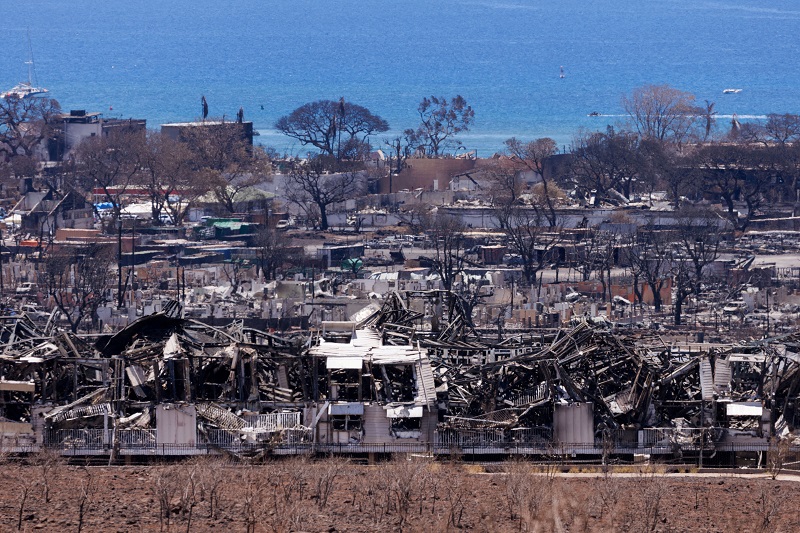
By Yoohoi Ahn
The author is an editor in the newsroom of the Korea Daily.
The wildfire that devastated the Lahaina neighborhood on Maui, Hawaii, is not just a current tragedy, but also a harbinger of what our climate-driven future might entail.
While the flames have already caused immeasurable destruction in Lahaina, the repercussions continue. Hawaii Gov. Josh Green stated on August 14, “Searchers might find 10 to 20 bodies daily, so it could take 10 days to determine the total death toll.” With over 1,300 residents still unaccounted for and damaged homes awaiting searches, the magnitude of this disaster becomes even more evident.
Lahaina’s devastation resulted from a confluence of factors. Hawaii’s average temperature has risen by 2 degrees since 1950. Coupled with Lahaina being one of Maui’s driest areas, and the winds from Hurricane Dora located 800 miles away, conditions were ripe for catastrophe. The inversion layer, typically found higher above Maui, was lowered due to warmer temperatures. This trapped and accelerated winds towards Lahaina’s flatlands.
Climate change intensified these already perilous conditions. A mere spark was enough to ignite this disaster. Human oversights — like inadequate warning systems, malfunctioning fire hydrants, and a lack of preventive power shutoff measures right after wildfires — added fuel to the fire. On August 15, some even posited that broken power lines in strong winds were the actual cause of wildfires.

These wildfires, the most disastrous the U.S. has seen in a century, highlight the grave reality of our climate change era. As climate change directly spawns wildfires, floods, and droughts, it also increases the chances of these multifaceted calamities. Even with advanced disaster management systems, their capacity is challenged by these escalating conditions. Where such systems are absent, even more devastating disasters are foreseeable.
Recent floods across Asia, particularly in China, and the European heatwave reveal a global unpreparedness for such rapidly unfolding disasters. In June, the European Union’s Copernicus Climate Change Service announced a grim milestone: the Earth’s surface air temperature now averages 1.5 degrees Celsius above pre-industrial levels.
Such statistics underscore the urgency articulated by leaders like UN Secretary-General António Guterres, who proclaimed, “the era of global warming is over; we’re now in the era of global boiling.” Jim Skea, chairman of the UN’s Intergovernmental Panel on Climate Change (IPCC), went further, suggesting that climate change jeopardizes Earth’s very survival.
Yet, there’s another side to this coin. While a temperature rise exceeding 1.5 degrees Celsius— the target set by the Paris Agreement—won’t signal the world’s end, it does indicate a changing ecosystem that could be less hospitable to humanity.
Signs are everywhere: coral reefs in Florida bleaching and perishing due to warmer waters, beetles ravaging pine trees in the Appalachian Mountains as they migrate north with the warmer temperatures, and Indian wheat crops wilting under 100-degree Fahrenheit conditions. Ecosystems are already reacting to these climate change impacts, but we, as the apex species, are seemingly lagging in our adaptability.




